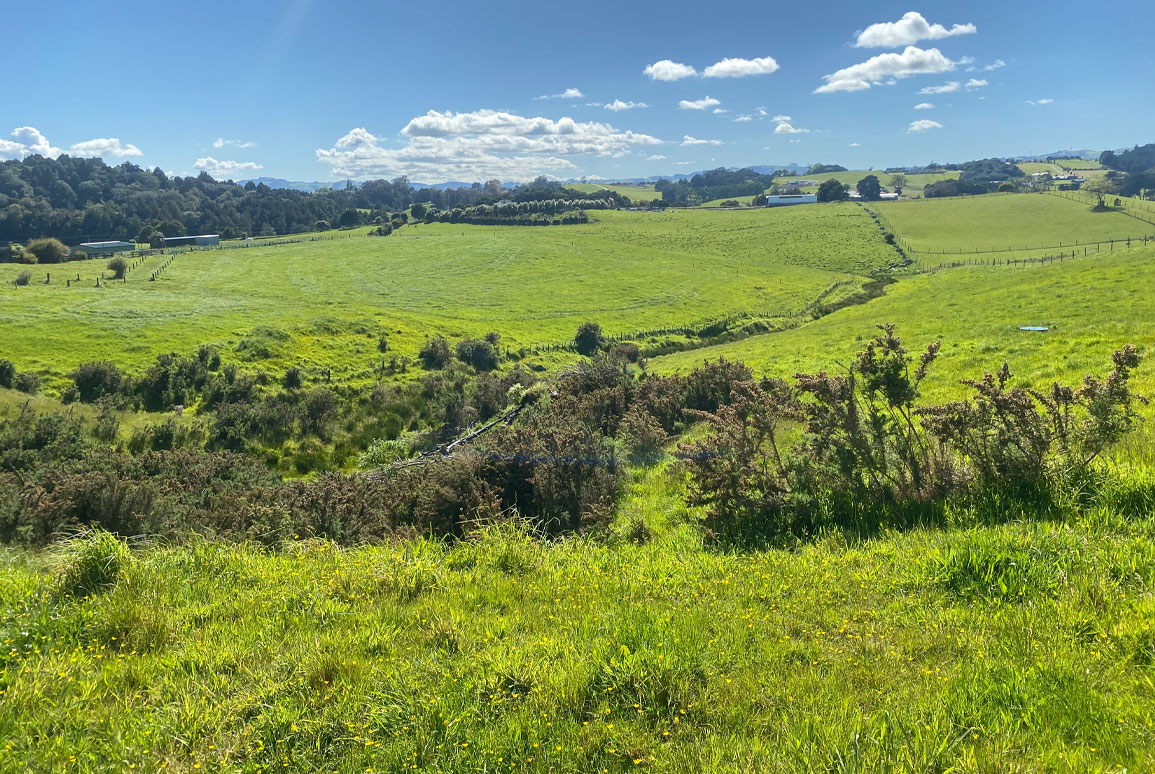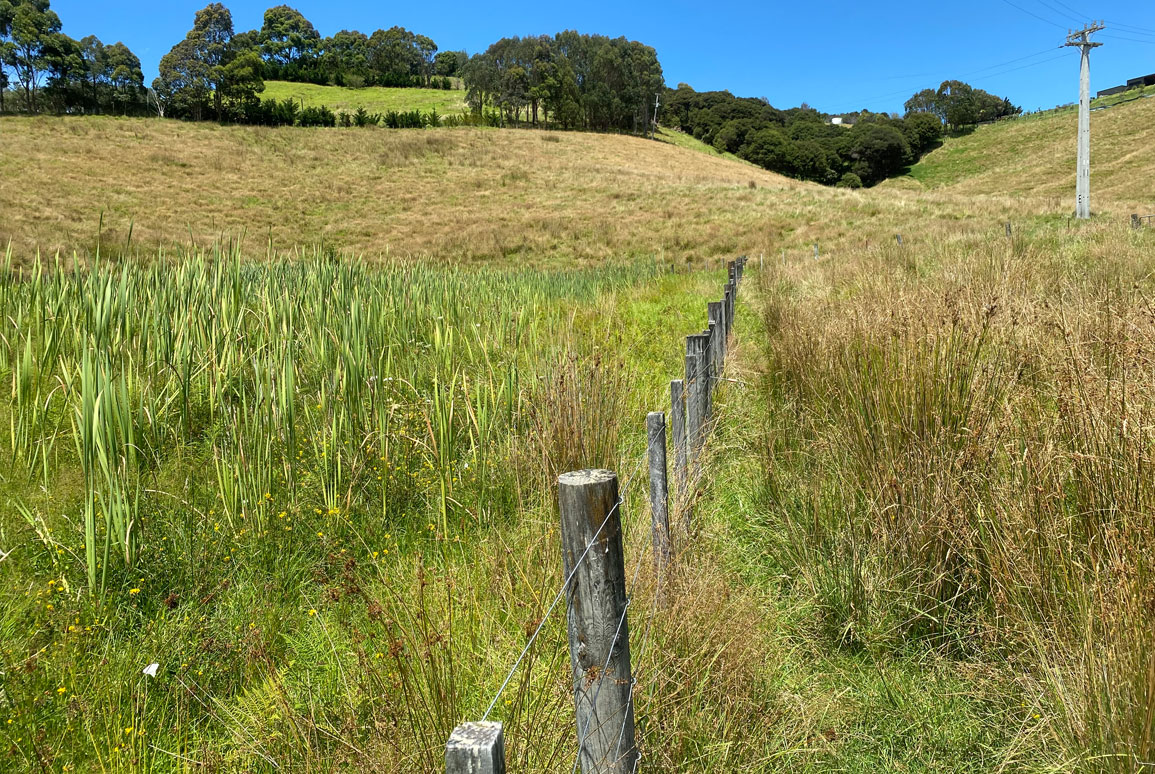Got Wetlands? Need Resource Consent? How an Ecologist Can help.
21 March 2024
Ecologist Eddie Sides outlines how ecological input is critical to navigating the path to a successful resource consent application.

Natural Inland Wetlands
Any project site that encompasses flow paths, seepages or gully systems, is likely to contain features that meet the definition of a natural inland wetland (NIW). These wetland features are regulated by a raft of controls, requiring specialist ecologist assessment to determine the presence and extent of NIWs . This information can then inform the project design and help navigate the available regulatory pathways.
Natural Inland Wetlands are defined in the National Policy Statement for Freshwater Management (NPS-FM) and regulated under the National Environmental Standards for Freshwater (NES-F). The NES-F provides a regulatory framework with different activity statuses (e.g. Permitted, Discretionary, Non-Complying, Prohibited) depending on the type of activity and the setback of a proposed activity from the identified wetland. The framework has focus on vegetation clearance and earthworks, in particular the potential for earthworks to cause hydrological change or result in ‘drainage’ or ‘partial drainage’.
Activity status depends on the type and purpose of proposed activities, and their proximity to, and effects on, wetlands. In summary:
- Earthworks within NIWs that are likely to result in their drainage or partial drainage are a Prohibited activity, unless for specified purposes listed in Regulations 45 to 45D (Table 1).
- Activities within 100 m that may cause drainage or partial drainage of NIWs are a Non-Complying activity, except for some specified purposes.
- Some infrastructure and development activities affecting NIWs are Discretionary if they meet regulatory requirements.
- Generally, urban Development activities affecting NIWs are Restricted Discretionary if they meet standards within the regulation.

Which regulations apply?
As can be seen in Table 1, different regulations apply according to the purpose of the activity, the nature of the activity and the proximity to the NIW. The process of identifying which regulations within the NES-F are applicable involves the following steps:
Step1
Survey the site and identify, delineate and classify any wetlands and watercourses. Note that recent case law (Page v Greater Wellington Regional Council) suggests that a comprehensive assessment should include vegetation, animals, soils and hydrology.
Step 2
Identify the purpose of the activity and relevant section of the NES-F:
- Construction or maintenance of Specified Infrastructure (Regulation 45).
- Quarrying (Reg 45A).
- Landfills and Cleanfill areas (Reg 45B).
- Urban Development (Reg 45C).
- Mineral Extraction (Reg 45D).
- Wetland restoration or maintenance (Regs 38 and 39).
- Construction or maintenance of a wetland utility structure (Reg 42).
- Drainage (Regs 52 and 53).
- Other activities (Reg 54).
Step 3
Identify the nature of the activity that might adversely affect the NIW:
- Vegetation clearance.
- Earthworks.
- Taking, damming or diversion of water.
- Discharge of water to water.
Step 4
Identify the distance of the activity from the NIW. This requires delineation of the extent of the wetland and of the activity.
Step 5
Assess whether hydrological effects are likely (this may require input from a hydrologist).

Applying for consent
The preceding steps determine the activity status under the NES-F. If the activity is Prohibited, resource consent cannot be applied for. Otherwise, if the activity is not Permitted, a resource consent is required.
In some instances, works within a wetland are provided for while still requiring resource consent, however, the “functional need” of that location must be demonstrated. These activities include specified infrastructure, urban development and stream reclamation. In addition to functional need, practicable alternatives need to be demonstrated (specifically for Quarrying, Mining and Landfill activities that affect NIWs).
In addition to the above, Unitary or Regional Plans, have separate rules for wetlands and streams, so the status of activities should be checked against these other plans. For example, Northland has wetland classes with different rules regulating activities, while the Auckland Unitary Plan has rules for reclamation and drainage of wetlands.
An application for resource consent will include an assessment of effects of the project, including the current and potential values and the nature, extent and duration of effects. The NPS-FM requires the applicant to Apply the Effects Management Hierarchy to avoid, minimise or offset effects of the activity on the NIW.

Managing Ecological Effects
An ecologist will provide specialist advice in identifying and delineating a NIW, assessing its values and functions, and assessing how it may be affected by proposed activities.
- For Prohibited activities, alternative approaches must be developed if the project is to proceed. An ecologist can assist with development and assessment of alternative options.
- For Permitted activities, you may require advice on compliance with Permitted Activity standards (for example standards for culverts).
- All activities that are not Permitted will require an assessment of ecological effects. The project must manage adverse effects to a level of minor (or less).
The presence of wetlands in a project site will constrain certain activities while also providing opportunities for positive outcomes, thereby becoming a significant factor shaping a development proposal. We recommend that an ecologist should undertake a survey to identify and map NIWs and watercourses as early as possible in the development program. This will mitigate project risk. Involving an ecologist in the design team is also recommended to provide feedback on the effects of different design options and alternatives.
The ecologist will provide advice on implementing the effects management hierarchy and assess the level of residual effects. Working with an ecologist throughout the project design is an effective way to minimise the project’s ecological effects, and to identify opportunities to achieve environmental benefits. This approach helps manage costs and delays associated with the consenting process and promotes great outcomes for both the project and the environment!
Eddie Sides is a consulting ecologist at Boffa Miskell with over 20 years’ experience, specialising in freshwater ecology. He manages diverse and complex projects across different ecosystems and helps his clients find solutions that are best for project and positive for the environment. This article was reviewed by Charles Horrell, Planner, Boffa Miskell and Dr Sarah Flynn, Ecologist, Boffa Miskell.

